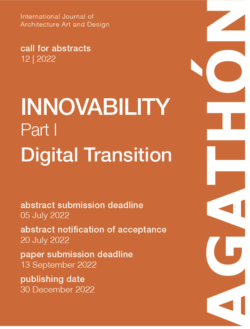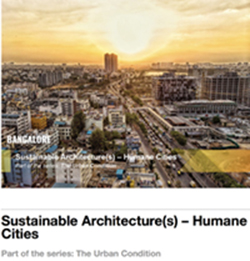ISSN (online): 1996-1944
Call of the Journal:
- Advanced Carbon Materials in Water Treatment or Separations Technology
- Advanced Functional Hybrid Materials for Novel Biomolecular Electronics
- Advances in Biomaterials | Design, Synthesis, Characterisation and Biomedical Application
- Advances in Construction and Building Materials
- Advances in Green Construction Materials
- Assessment of Metallurgical and Mechanical Properties of Welded Joints via Numerical Simulation and Experiments
- Carbon Compounds-Reinforced Ceramics
- Concrete and Waterproofing Materials | Development of Waterproofing Technology for Buildings and Civil Concrete Structures
- Corrosion Inhibitors for Steel | Experimental and Theoretical Studies
- Damage and Failure of Polymers, Polymer-Like Materials, Adhesives and Polymer Nanocomposites
- Development of Energy Storage or Conversion Element Based on Various Nano Materials
- Dyes | Synthesis, Properties, and Applications
- Dynamic Behavior of Ceramic Composites
- Flexible Sensors and Actuators for Novel Wearable Solutions
- Fundamentals and Applications of Bionano Sensor Techniques
- Graphene Foam Based Composites
- Growth and Application of Foam-Based Materials
- High Performance Concrete
- Hybrid Noble Metal/Graphene Aerogels | Synthesis, Characterization and Applications for Chemical Sensing and Biosensing
- Hydrogen Storage and Fuel Cells | Materials, Characterization and Applications
- Load Test and Numerical Analysis on Construction Materials
- Machining and Surface Properties of Steel Parts
- Materials under Extreme Conditions | Technologies for CRMs Reduction, Substitution and Recovery
- Microplastics and Nanoplastics | From Resource to Pollution
- Mineral-Bonded Composites for Enhanced Structural Impact Safety
- Modification and Processing of Biodegradable Polymers
- Nanostructured Semiconductors for Photoinduced Applications
- Novel Inorganic Adsorbents for Environmental Purification
- Numerical Simulation and Experimental Studies of Wave Phenomena in Composite Materials
- Performance Research of Polyurethane Foams and Composites
- Physics, Electrical and Structural Properties of Dielectric Layers
- Precision and Ultra-Precision Subtractive and Additive Manufacturing Processes of Alloys and Steels
- Processing and Thermal Properties of Hybrid Composites
- Recent Advances in 3D Printing for Biomaterials
- Recent Progress in the Development, Material Properties, and Post-Processing of Additively Manufactured Components
- Silica and Silica-based Materials for Biotechnology, Polymer Composites and Environmental Protection
- Study on the Modification and Compressive Properties of Concrete Buildings Materials
- Superconductors for Opto-Nano and Micro-Electro-Mechanical Systems (O-N/MEMS)
- Synthesis and Characterization of Hybrid Nanomaterials and Nanocomposites
- Synthesis, Properties and Applications of Polymer Blends
- Testing of Materials and Elements in Civil Engineering
- The Science and Technology of 3D Printing
Jan
2021
Feb
2021
A polymer blend is a macroscopically homogeneous mixture of two or more polymers (homopolymers or copolymers) that have been blended together to create a new material with different physical properties. These blends are intensively studied because of their theoretical and practical importance. They are utilized in various applications, and it has been estimated that approximately 30% of all polymers are sold as a type of polymer blend material. Polymer blends have gained importance because of the ability to modify their mechanical properties (e.g., rubber toughening), but also to adapt properties for other specific applications (e.g., applications of biopolymers in food packaging). The past several decades have seen many developments in the science and engineering of polymer blends. In this Special Issue, we aim to publish full research papers, short communications, and review articles describing the current trends and technologies for the synthesis, modification, and processing of polymer blends. The submissions will focus on improving polymer blend properties and expanding the possibilities for application.
Keywords: biopolymers for polymer blends; polymer blends from renewable resources; biodegradable polymer blends; ultrathin films of polymer blends; barrier properties of polymer blends; nanostructures in polymer blends; compatibilizing effect of fillers in polymer blends.
Synthesis, Properties and Applications of Polymer Blends
A polymer blend is a macroscopically homogeneous mixture of two or more polymers (homopolymers or copolymers) that have been blended together to create a new material with different physical properties. These blends are intensively studied because of their theoretical and practical importance. They are utilized in various applications, and it has been estimated that approximately 30% of all polymers are sold as a type of polymer blend material. Polymer blends have gained importance because of the ability to modify their mechanical properties (e.g., rubber toughening), but also to adapt properties for other specific applications (e.g., applications of biopolymers in food packaging). The past several decades have seen many developments in the science and engineering of polymer blends. In this Special Issue, we aim to publish full research papers, short communications, and review articles describing the current trends and technologies for the synthesis, modification, and processing of polymer blends. The submissions will focus on improving polymer blend properties and expanding the possibilities for application.
Keywords: biopolymers for polymer blends; polymer blends from renewable resources; biodegradable polymer blends; ultrathin films of polymer blends; barrier properties of polymer blends; nanostructures in polymer blends; compatibilizing effect of fillers in polymer blends.
ADS-Astrophysics Data System, AGORA(FAO), CAB Abstracts(CABI), Chemical Abstracts (ACS), Current Contents-Engineering, Computing & Technology (Clarivate Analytics), DOAJ, Ei Compendex/Engineering Village (Elsevier), Genamics JournalSeek, Global Health (CABI), HINARI (WHO), Inspec (IET), Journal Citation Reports/Science Edition (Clarivate Analytics), Julkaisufoorumi Publication Forum (Federation of Finnish Learned Societies), Norwegian Register for Scientific Journals, Series and Publishers (NSD), Polymer Library (Smithers Rapra), PubMed (NLM), Science Citation Index Expanded – Web of Science (Clarivate Analytics), Scopus (Elsevier), Web of Science (Clarivate Analytics), Zetoc (British Library), CLOCKSS (Digital Archive), e-Helvetica (Swiss National Library Digital Archive), PubMed Central (NLM), Academic OneFile (Gale/Cengage Learning), EBSCOhost (EBSCO Publishing), Energy & Power Source (EBSCO), Engineering Source (EBSCO), Google Scholar, J-Gate (Informatics India), Materials Science & Engineering (ProQuest).
Info at: www.mdpi.com/journal/materials/apc
Guest Editor
Prof. Dr. Domagoj Vrsaljko










